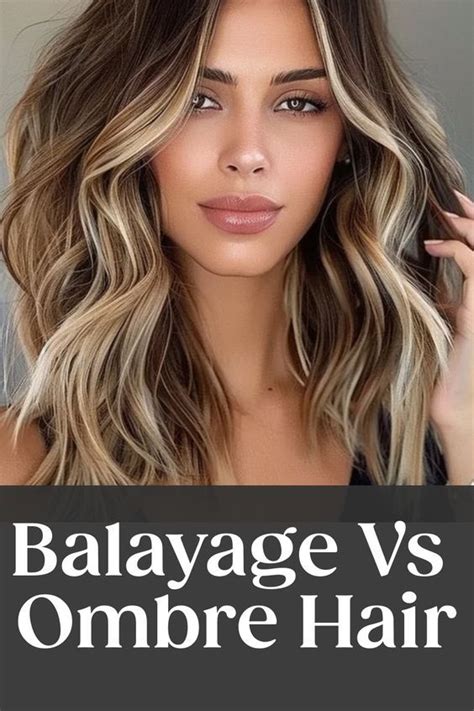Understanding the Nuances of Hair Coloring Techniques
Selecting the ideal hair coloring technique between highlights and balayage can be overwhelming. While both methods aim to enhance hair color, they differ significantly in their approaches and results. This comprehensive guide will unravel the 7 essential distinctions between highlights and balayage, empowering you to make an informed decision based on your desired look and hair goals.

1. Application Method
Highlights:
- Involves using foil or plastic wrap to create isolated sections of hair.
- Bleach or hair lightener is applied to these sections to lift their color.
Balayage:
- Involves a freehand painting technique where bleach or lightener is directly applied to the hair’s surface, without using foils.
- Creates a more natural, blended look by selectively painting specific strands.
2. Placement and Coverage
Highlights:
- Typically placed in regular, even patterns throughout the hair.
- Can be used to achieve higher contrast and bolder results.
Balayage:
- Usually placed in a more haphazard manner, creating softer, more subtle transitions.
- Focuses on lightening ends and mid-lengths, resulting in a more natural, sun-kissed appearance.
3. Intensity and Contrast
Highlights:
- Can create high-contrast streaks or subtle highlights, depending on the level of bleach or lightener used.
- May require multiple sessions to achieve the desired result.
Balayage:
- Generally delivers a lower-contrast, more natural-looking result.
- Creates soft, blended transitions that mimic the effects of natural hair growth.
4. Maintenance
Highlights:
- Require regular touch-ups (every 6-8 weeks) to maintain contrast and prevent fading.
- Can be more time-consuming and expensive to maintain.
Balayage:
- Requires less frequent touch-ups (every 10-12 weeks) due to its gradual transitions.
- Generally easier and more cost-effective to maintain.
5. Hair Damage
Highlights:
- Involve more chemical processing, which can lead to higher hair damage.
- May require deep conditioning treatments to repair and protect hair health.
Balayage:
- Uses less bleach or lightener, resulting in less hair damage.
- Can be more gentle on hair, preserving its overall health.
6. Suitability for Hair Types
Highlights:
- Ideal for all hair types, but particularly well-suited for thicker, coarse hair that can withstand more chemical processing.
Balayage:
- More versatile, suitable for all hair types, including fine and fragile hair.
- Can create a more natural look on naturally lighter hair or hair with existing highlights.
7. Cost
Highlights:
- Typically more expensive than balayage due to the use of foils and a more labor-intensive application process.
Balayage:
- Generally less expensive than highlights as it requires less bleach and a shorter application time.
Common Mistakes to Avoid
- Over-processing: Avoid keeping bleach or lightener on the hair for too long, as it can lead to excessive hair damage and breakage.
- Uneven application: Ensure an even distribution of bleach or lightener for both highlights and balayage to avoid patchy or unnatural-looking results.
- Inappropriate choice: Consider your hair type and desired look when selecting a technique to avoid unsatisfactory outcomes.
- DIY disasters: Leave hair coloring to professionals to prevent irreversible hair damage and ensure optimal results.
Why it Matters: The Benefits of Highlights and Balayage
- Highlight your best features: Both highlights and balayage can enhance facial features by framing the face and accentuating certain areas.
- Add depth and dimension: These techniques create visual interest and texture in the hair, making it appear thicker and fuller.
- Refresh your look: Highlights and balayage offer a way to update your hairstyle without drastically changing your overall color.
- Low maintenance (balayage): Balayage requires less frequent touch-ups, making it a more convenient option for those with busy schedules.
Conclusion
Understanding the distinctive characteristics of highlights and balayage empowers you to make an informed decision based on your individual hair goals and preferences. Whether you seek high-contrast highlights or a more natural, sun-kissed look, choose the technique that best complements your hairstyle and hair type. By avoiding common mistakes and consulting with a professional stylist, you can achieve the perfect hair color transformation tailored to your unique needs.
